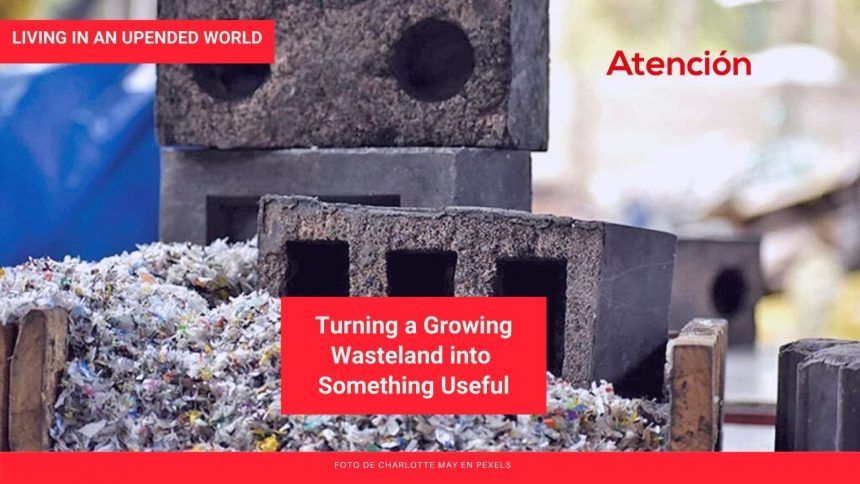By Natalie Taylor
Plastic waste is highly visible—we see it uglifying and harming our lands and waters everywhere. And yet the world continues to produce millions of tons of plastics each year driven by the economic paradigm that goods are produced, consumed, then disposed of. This cycle assumes endless economic growth and ignores the planet’s exhaustible resources. Ideally the world will switch to biodegradable materials, but in the interim we need to deal with the accumulated waste.
Recycling and repurposing plastic waste has many hurdles to overcome including lack of profit and the current high cost of recycling. But innovative ideas could banish these obstacles. Although plastics are nearly indestructible, they are all technologically recyclable and can be used again and again to produce the same goods. They can be shredded or melted and reprocessed into new materials for different applications. They can also be blended with virgin plastic (not previously recycled) strengthening the end product and also reducing cost. Plastics are strong, durable, waterproof, lightweight and easy to mold.
Examples of successful industrial recycling include PET (polyethylene terephthalate), to make soft drinks bottles and polystyrene. Plastic waste can even be shredded and used as filler for asphalt or decomposed through heating to produce fuel. The UK has at least two types of roads with recycled plastic mixed in with the asphalt, and there are plans for more. And a Japanese company sells a portable machine to convert domestic plastic waste into fuel in a simple affordable way.
One the most utilitarian ideas is to turn plastic waste into building material. The existing initiatives are promising, but not yet reproducible on an industrial scale. There are many ways to obtain materials to produce bricks—roof tiles, plastic lumber and other elements including carpeting, home accessories and trimming items. Agricultural wastes like sugarcane bagasse (a by-product of the sugar industry), coffee dregs, concrete waste and construction debris can be compounded with recycled plastics. Discarded plastics can be part of a pathway towards a more sustainable way of living. Although not entirely environmentally friendly the ecological footprint of a polymeric material is smaller than that of natural materials with their sizeable demand on arable land, clean water and fertilizers. Building with plastic waste requires fewer resources than natural products and diverts material that would otherwise go to landfill or into the oceans.
Building materials made from recycled plastics are not yet widely used in the construction industry—prototypes have mainly been used for demonstrative installations. It will take political will and widespread environmental awareness to encourage more investment into the potential in plastics recycling. But with engagement of government and industry there may be an opening in the market and in people’s minds to welcome plastic initiatives to replace conventional building materials. Instead of concrete, bricks, or wood, the homes and businesses of the future may be erected using discarded plastic bottles, containers and former plastic gadgets. On a large scale this would help clean up the planet and save many trees from being turned to lumber.

